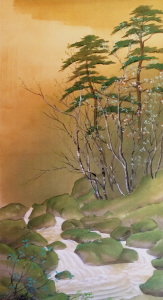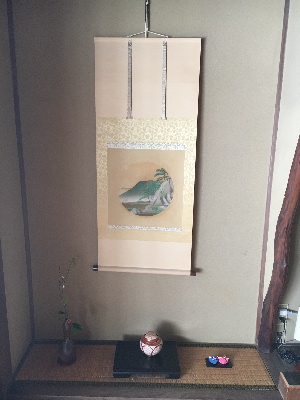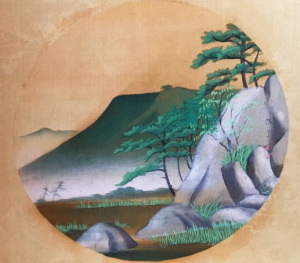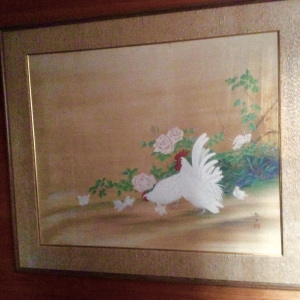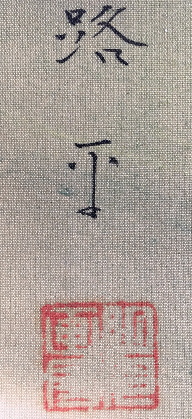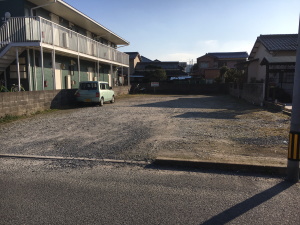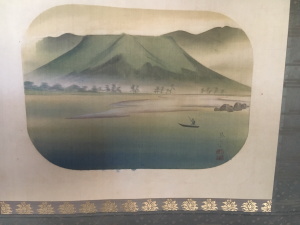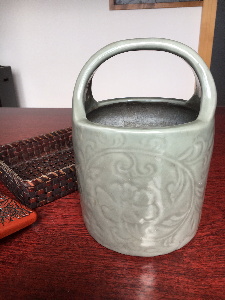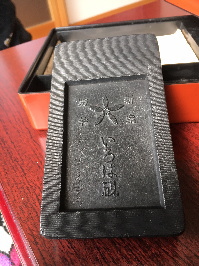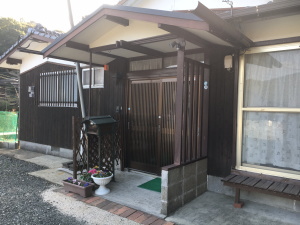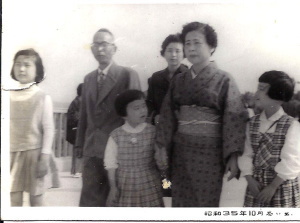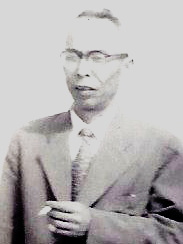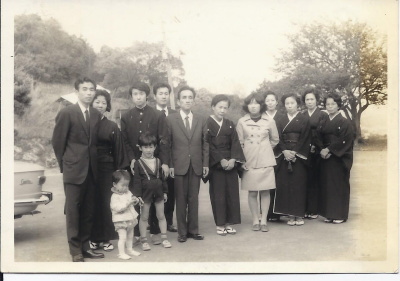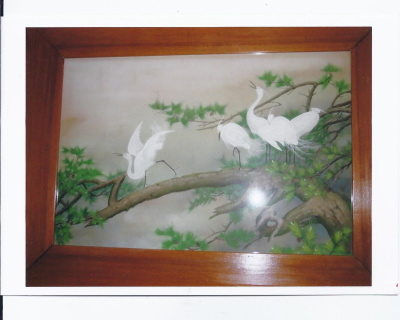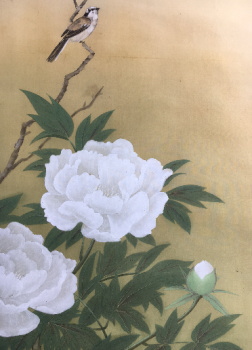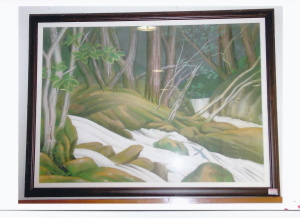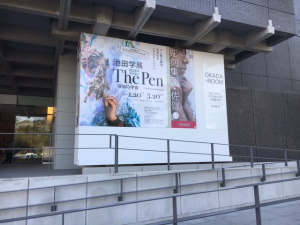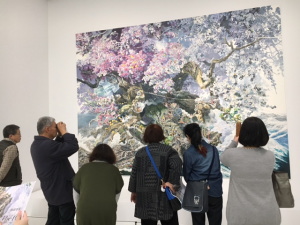|
|||||||||||||||||||
Artist of Nihonga Rohei Tanabe 1900-1970
|
|||||||||||||||||||
| Hello! Trees and grass are fresh green swaying in the spring breeze. This month I will show you some of my favorite paintings. We have a hundred Kakejikus(a hanging scroll with a painting or a work of calligraphy) in Yoyokaku, since it is Japanese culture to hang a scroll on the alcove of the guest rooms. At each season, or depending on an occasion of happy or unhappy, we change Kakejikus. These paintings are Nihonga, Japanese paintings. Now, I hang Cherry blossom Kakejikus in some of the rooms. Soon I will change them to Peony in May, and then to Iris in June. Huh! I am busy! I believe that the Kakejiku is the greeting from the host to the staying guests, just like we do in Tea ceremony to welcome the guests. That is a silent message."Shall we share this important moment of this splendid season? Among the many, I have eight Kakejikus painted by Rohei Tanabe. Masaru Tanabe (art name Rohei Tanabe) was born in Karatsu in 1900, graduated from Karatsu Highschool , and went to Tokyo Art School, that was the only National Art School at that time of Meiji Era. (founded in 1887) He was doing well as a Nihonga artist, but Destiny did not smile at him. He lost his beloved wife Yuki, and to save his three children from the air-raid of B29 in the war, he returned to Karatsu with his children. He taught painting at his mother highschool for a short while, and by the re-marriage to Saka Noda in Kyuragi, a small town near Karatsu, his family lived a quiet life of countryside. After the war, everything changed and was westernized. Painting of traditional Japanese style did not sell well. His wife Saka, a midwife, worked day and night to support the family. After highschool, two sons Kentaro and Yasuo went to Tokyo to live their own life, and the youngest girl Michiko also went to her brothers. Kentaro died young to Rohei's great grief. Rohei died at the age of 70 in 1970. His wife Saka survived him 27 years. Now Rohei and Saka sleep together in Kanagawa Prefecture where Rohei's second son Yasuo lives. My husband's father, the late Hitoshi Okochi, was a highschool friend of Rohei's about a hundred years ago. Father bought some Nihongas from Rohei probably at Rohei's hard time These were made into Kakejikus, which I love so much. Rohei's green, a traditional Japanese green, attracts me deeply. Please enjoy meeting Rohei's green (Malachite green) of Nihonga. *Sorry for the poor skill of photograph. I can not do lighting in a proper way. The real painting's green is much bright. |
|||||||||||||||||||
|
|||||||||||||||||||
| A Nihonga artist dreamed a world, but the time was changing. Nihonga
was not in fashion any more in the rapidly westernizing society after war.
Japan tried to follow America in every detail of life style. Nihonga, Kakejiku,
Byobu, these became now useless things. He came back to his home town Karatsu, and at this moment, his ambition as a painter was crushed down. Now, a young artist, who was born in this district, was suddenly spot-lighted, and even before he realizes, he has become a sensational world topic of art. Rohei Tanabe's dream was handed over to the younger generation. Saga Prefecture is proud of this new-born genius. I hope I can introduce Manabu Ikeda's painting in a proper way someday. Thank you for meeting Rohei Tanabe. I hope you are now a fan of Nihonga. |
|||||||||||||||||||
|
Thank you very much for joining me.
I hope you will visit us again next month. |
|||||||||||||||||||
| Mail to Harumi
Okochi |
|||||||||||||||||||

